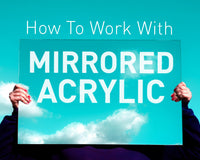 This Kitronik University resource is for anyone interested in E-Textiles and wearables. For those who don't know what electronic textiles are we cover all of the basics including elementary circuit design, and basic do's and don'ts when using conductive thread. If you're looking for something more advanced we have a range of tutorials for many of our Electro-Fashion components including our Igloo, PICAXE wearable module.
This Kitronik University resource is for anyone interested in E-Textiles and wearables. For those who don't know what electronic textiles are we cover all of the basics including elementary circuit design, and basic do's and don'ts when using conductive thread. If you're looking for something more advanced we have a range of tutorials for many of our Electro-Fashion components including our Igloo, PICAXE wearable module.
Contents:
Introduction
If you're new to e-textiles and wearables we recommend you start here. You'll learn about the various components we have available in our very own Electro-Fashion range, how it all works, and we'll show you how to sew a basic circuit.- What are e-textiles/wearables? (coming soon)
- E-Textiles: an introduction to our Electro-Fashion range.
- E-Textiles: a lesson in Electro-Fashion components.
- How conductive thread works.
Getting started with e-textiles
When you're ready to start sewing we recommend you start with our getting started guides. We'll cover basics such as choosing and threading a needle, starting and finishing stitches, as well as looking at LEDs and switches.
The basics
- Lighting up a Simple E-Textiles Circuit.
- Choosing a needle.
- Threading a needle.
- Starting to sew.
- Finishing off your stitches.
- How to use conductive thread with a sewing machine.
- Basic circuit with standard LED.
- Basic circuit with PCB LED.
- Positioning LEDs through fabric.
- Adding switches to a circuit.
- Fault finding in E-Textiles.
- E-Textiles: the frequently asked questions.
Making custom components
One big advantage of soft circuits is the wide range of ways you can incorporate regular fabrics and textiles to create custom components. In this section we give you some ideas to get you started.- How to make a soft hook and loop switch (hook and loop fastener).
- How to make a soft press stud switch.
- How to make a soft tilt switch with jewellery.
- How to Make a Soft Battery Holder (Power Board).
Programmable modules
As well as our own programmable Igloo board, we'll also teach you about the BBC micro:bit and the role it plays in wearable technology. Igloo: The PICAXE wearable module Our programmable Igloo board is our first wearable module. Using a PICAXE chip you can program the Igloo to control inputs and outputs, and much more.- Getting Started with Igloo: 'Hello World'.
- Igloo Tutorial 2: Momentary Switch.
- Igloo Tutorial 3: Blink - External Digital Output.
- Igloo Tutorial 4: Fading LED - Pulse Width Modulation.
- What is the BBC micro:bit?
- BBC micro:bit getting started guide (coming soon).
- BBC micro:bit blocks (coming soon).
E-Textiles Project Tutorials
Ready for a project but not sure where to start? Our huge range of complete step by step project tutorials take you through the process from start to finish.Easy
These beginner E-Textiles tutorials are great for people with little or no experience in textiles or electronic circuits. The circuits are simple enough to reproduce and yet still allow you to add some bling to your own textiles project.- How to Make an LED Flower Power Hair Accessory.
- How to Make a 'Be Seen, Be Safe' Belt Band.
- How to Add a Standard LED to a Beanie Hat.
- How to Add a PCB LED to a Beanie Hat.
- How to Make a Light-up Collar for a Dog.
- How to Make a Sewable Rocket Key Ring Torch.
- How to Add 3 Standard LEDs to a Bag.
Intermediate
These tutorials assume some existing textiles skills, and an understanding of how electronic circuits work. They introduce concepts such as novel ways to include a switch within a circuit, and hacking existing products to add some sparkle!- BBC micro:bit emoji bag.
- BBC micro:bit rocket themed countdown pencil case.
- How to Make a Zippi Doll.
- How to Use the Magnetic Switch in an E-Textile Circuit.
- How to Style up your Skirt with Lazy Daisy LEDs.
- How to Make a Backpack Cover with a Light Sensor.
- How to Make an LED Brooch with a Magnet Switch.
- How to Individualise a T-shirt with easy sew LEDs.
- How to Make a Light-up Ladybird Bag.
- How to Make a 'Be Seen, Be Safe' Armband.
- Make a GloSport High Visibility Exercise Glove.
- How to Make a Stylish E-Textiles BagLight.
- How to Make a Traffic Light SmartBand.
Advanced
Coming soon.Seasonal
These tutorials are great for seasonal projects and many include free templates.- How to Make Valentine Magnetic Hearts.
- How to Add Sewable LEDs to Easter Bunny Ears.
- How to make a Sewable Halloween LED badge - Free templates included.
- How to Make a Sewable Christmas Decoration Using Our Free Pre-Cut Foam Template.
- How to Make a Laser Cut Christmas Decoration.
- How to Make a Rudolph Christmas Decoration.
Further inspiration
We've gathered some examples of our customers work, along with some project ideas from other sources such as Nottingham Trent University into a further section. Although not tutorials these can be a great place to find some extra inspiration.- NTU Fuzzy Circuits - LED Wallet/Purse.
- NTU Fuzzy Circuits - LED Jacket.
- Masquerade in bright white LEDs.
- Nottingham Trent University Undergraduates Bring Some Sparkle to Their Textiles Projects.
- Electro Monster Puppets - Kenilworth School.
- Conductive thread winding machine hack.
- How the Electro Fashion cat is screen printed.
- NTU Student Teachers Health and Well-being ideas.
©Kitronik Ltd – You may print this page & link to it, but must not copy the page or part thereof without Kitronik's prior written consent.






